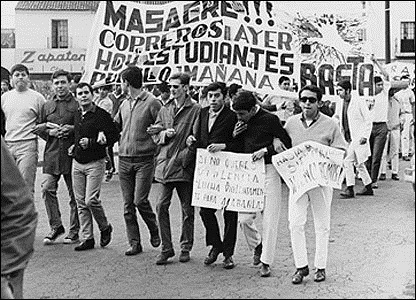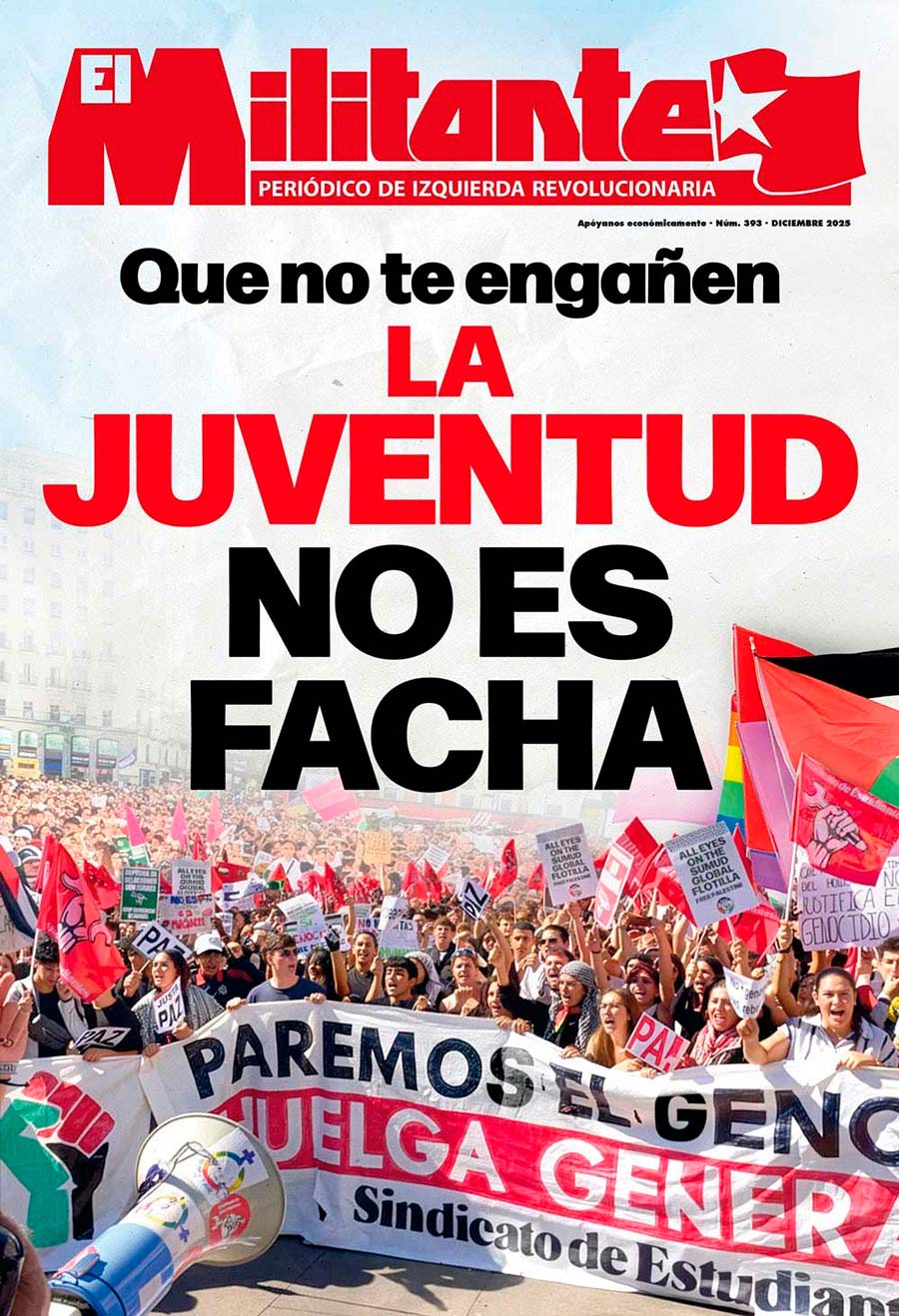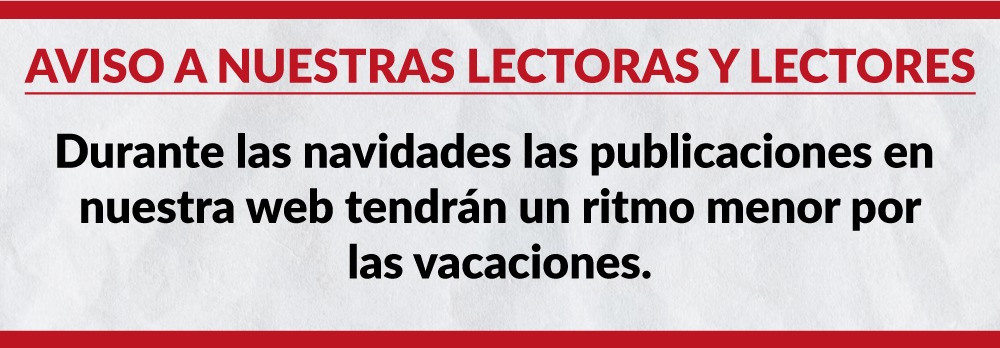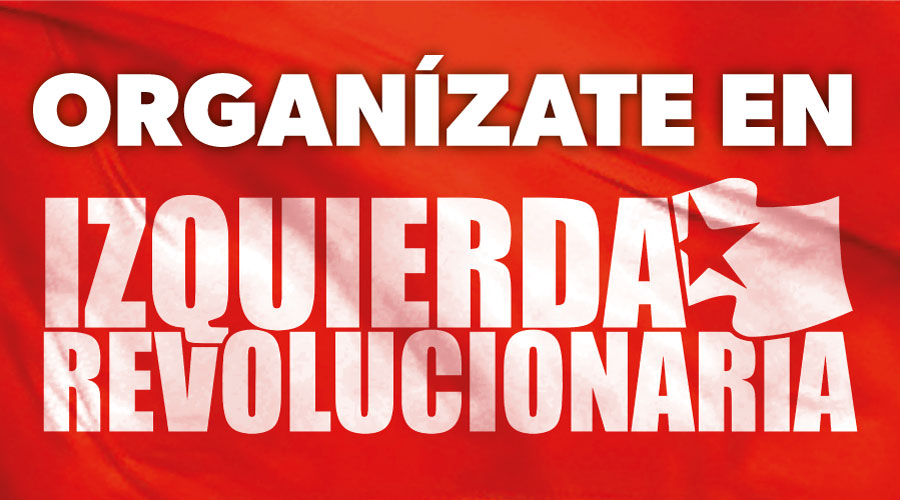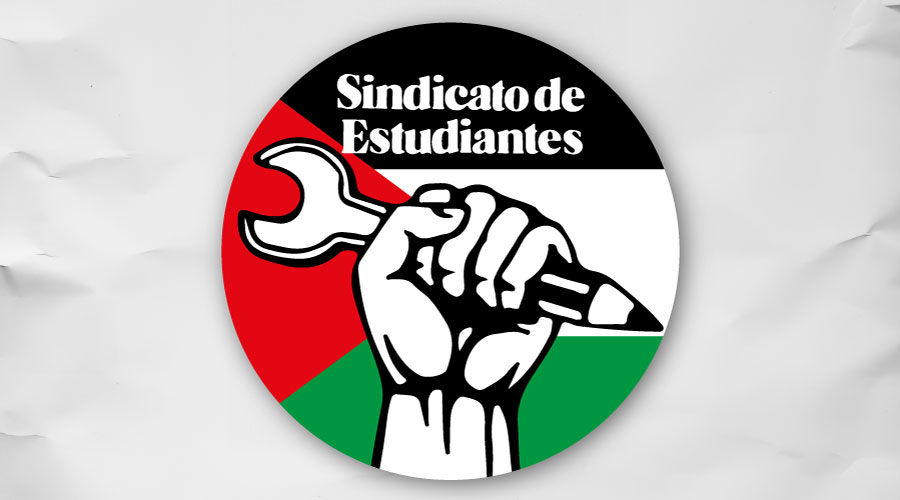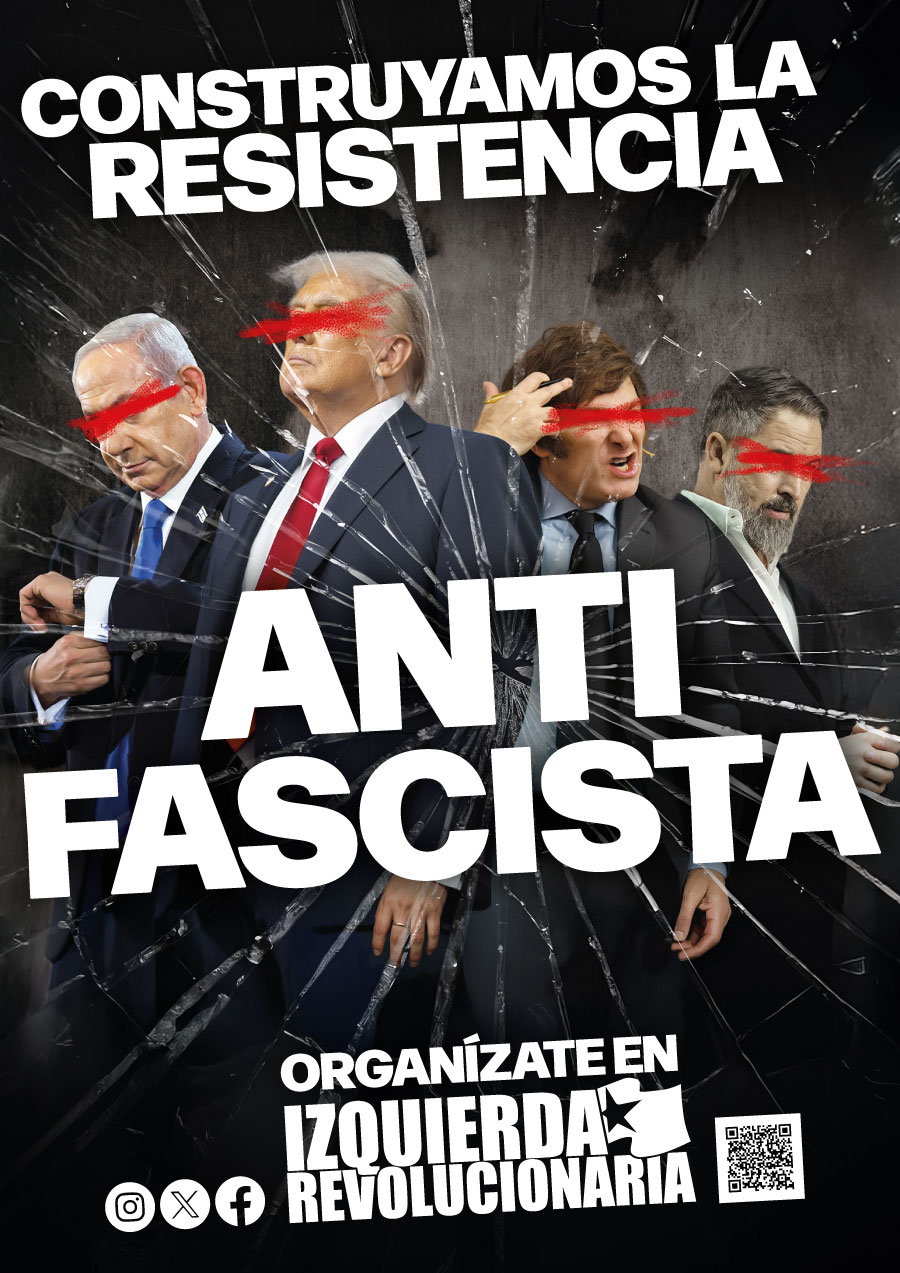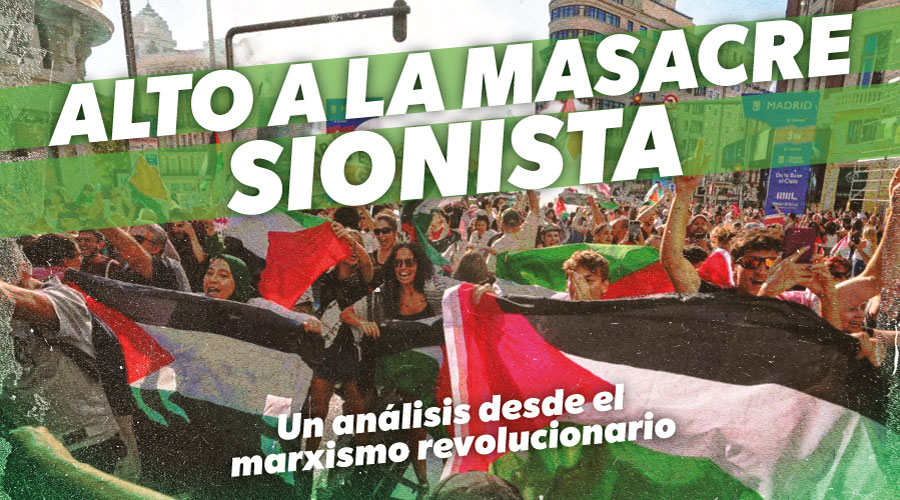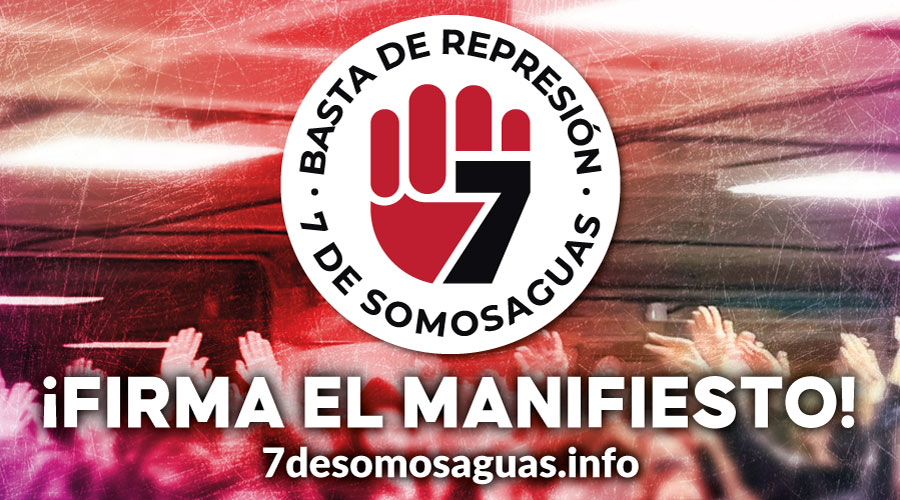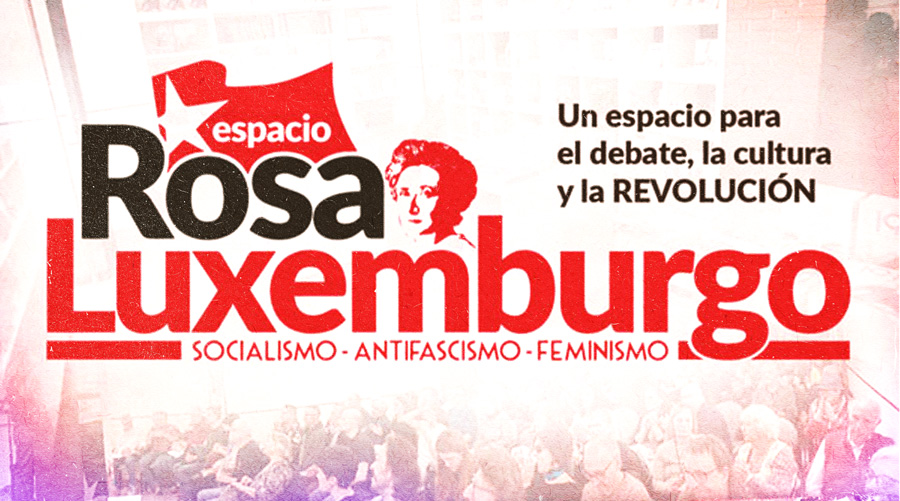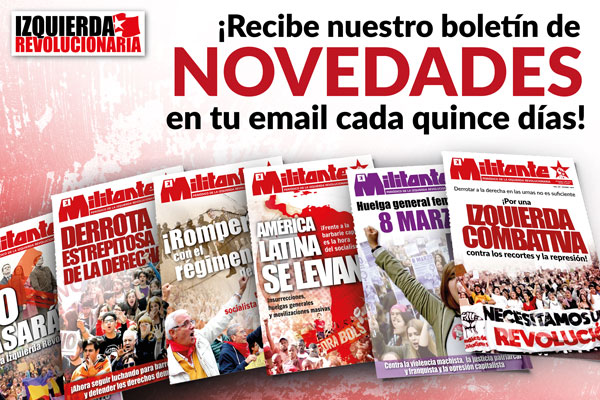"From time to time, each new era presents people, especially their young people, with new dilemmas and plots. Previous legacies are crumbling and boys and girls must invent their own way of being in the world.
[...]
Patricio Rivas, Chile, a long September.
The youth and popular movement that developed from July to December 1968 has undoubtedly been one of the most intense and revolutionary chapters of the class struggle in Mexico. Its repercussions extended during the following decades to all areas of public life, and marked the consciousness of an entire generation.
To look back on that experience and the lessons it contains is an obligation for all of us who struggle for socialist transformation.
The nature of the Mexican capitalist state
Mexico experienced an important period of social reforms under Lázaro Cárdenas in the 1930s, many of which carried out the demands of the revolutionary process initiated in 1910. Public education experienced important advances, as did workers' union and political rights. Within what was a period of enormous popular pressure and the rise of workers' struggles, the nationalization of the railroads and the oil industry by Cárdenas was an open challenge to the imperialist capital that monopolized Mexico's main sources of wealth. These measures, and the strong impetus given to agrarian reform through the distribution of land among the agricultural workers (campesinos), created a mass base for the regime.
Relying on the large organizations of campesinos that were formed in the heat of these developments, in 1938 made up of the National Campesino Confederation (CNC), and the Confederation of Mexican Workers (CTM), Cardenas reinforced his position. His nationalist discourse connected with the ‘popular front’ programme of the Communist Party of Mexico (PCM) and the leader of the CTM, Lombardo Toledano. The practice of class collaboration, wrapped in the flag of bourgeois nationalism, allowed the union organizations to be placed under the control of the capitalists, and thus, the errors of Stalinism left their historical mark on the Mexican labour movement.
Obviously, among the Mexican bourgeoisie, there were vast sectors that rejected the populist approach of the left and Cardenas’ reforms, and the struggle was polarized sharply. When Cárdenas decided to found the Partido de la Revolución Mexicana (PRM), he confronted large sectors of the army and the oligarchy which acted as a transmission belt of British and American imperialism.
After hard battles for control of the PRM, in 1946 the ruling class changed the name of Cardenas’ organization to the Institutional Revolutionary Party (PRI). Resorting to populist demagogy and social clientelism, the PRI maintained an iron grip on Mexican politics.
The Mexican bourgeois state always had Bonapartist characteristics, reflecting the weakness of the bourgeoisie as a class and the peasant base of the country. The different ruling cliques had to manoeuvre between classes and factions, between power groups, put the brakes on them and then incorporate them into the State apparatus. Little by little, they perfected the centralization and control over the public life of the country. The executive power increased its preponderance over the legislative and judicial, taking the form of presidentialism: a strong man, the President, a political apparatus ideologically and economically strong, the Institutional Revolutionary Party (PRI), inseparable from the State and, as a guiding thread, authoritarianism and repression. The deeply undemocratic nature of the regime was the basis for the monstrous repression of the Gustavo Díaz Ordaz, Luis Echeverría Álvarez and Marcelino García Barragán regimes.
Campesinos and workers
The Mexico of the 1960s brought together a concentration of economic and social processes that had important consequences. As a result of industrial development, during and after the Second World War, the productive base of the country widened, but the backward and dependent nature of the Mexican economy as a supplier of raw materials to the first world, mainly to US imperialism, was not eliminated.
Mexico benefited from the boom of the world capitalist economy and particularly the US. It was the period known as "stabilizing development". The effects on society were remarkable: the population grew at annual rates of 3.4%, pushing a large urban development. Public investment in large infrastructure and housing projects multiplied and boosted job creation. The ruling class breathed in an atmosphere of confidence, publicly symbolized at the opening of the Olympic Games.
However, behind the spectacles, the pomp and economic statistics, the workers, the poor campesinos and the youth endured tough exploitation and political repression at the hands of the regime.
In the 1960s, the situation of millions of peasants was desperate. With the agrarian reform paralyzed by the governments after Cárdenas, there was a new process of concentration of property in the hands of the usual landowners and imperialist agro-food companies. A growing number of campesinos became radicalized and took action, with a crucial ally: the teachers. Thousands of teachers, from rural areas, became in those years the "organic intellectual" of the poor campesino, and they fanned the flames of the guerrilla struggle in Mexico. On September 23, 1965, a guerrilla group organized by teachers and student teachers set out to assault the Madera military barracks in Chihuahua. At the end of the decade Lucio Cabañas, also a teacher and leader of the Party of the Poor, did the same in Guerrero, after the stifling experience of government control of the large campesino organizations.
At the same time as the government repressed the protests in the countryside and the city, making the independent political organization impossible and decapitating the movements and organizations, it maintained the subjection of the masses through the official corporatist organizations and “charras” (yellow corporate unions).
To achieve this control, small concessions were granted, or some demands were incorporated into the official discourse, albeit in a mediated manner. The campesino organizations had the capacity to manage some minimum land distribution, although usually the most unproductive land. The workers and urban workers' organizations maintained a great capacity to manage hiring in large private and public companies, and could provide their members with a certain level of social benefits. Of course, the counterpart was salary caps and collaboration with the police repression of those sectors of the labour movement that took a class position and were combative and democratic.
By 1968, social inequality had increased considerably. The "stabilizing development" worked like a charm for the 10% of richest families that accounted for half of the national income, not for the 40% of the poorest who only had 14%. The social and economic gap also had regional features, with a much poorer south than the north.
A spectre travels the world
In part due to the needs of developing capitalism for skilled labour, in part as a way to silence social discontent, the different PRI governments allowed children of working families to access higher education. The number of students enrolled in the National Autonomous University of Mexico (UNAM), in the National Polytechnic Institute (IPN) and in the state universities, increased exponentially. The university in Mexico acquired a distinctive feature: it became a mass university, although the labour market was unable to absorb the mass of graduating students.
Thousands of children of workers and peasants went to the classrooms. There they trained professionally and technically but they also resumed a long tradition of organization and struggle against social injustice and government repression, which particularly in the Teacher training colleges and UNAM had always been remarkable.
The youth movement that broke out in Mexico City and throughout the country did not fall like a bolt from the sky. In a way, it was the resurgence of the revolutionary consciousness of an entire people. With the mass organizations of the peasants and workers were firmly subordinated to the bourgeoisie and the State, the class struggle was expressed through a youth, that had grown up in the authoritarianism of the regime, educated in the radical and socialist culture of the universities, and facing an increasingly uncertain future.
The international context was also deeply inspiring for Mexican youth: the Cuban Revolution, the assassination of Che, the French May, the mobilizations against the Vietnam War, the Latin American guerrilla movement, the Black Panthers in the US, the assassination of Martin Luther King , etc. All of these were combined with the recent memories of the teachers’ struggle, the railroad strike of 58, the murder of Rubén Jaramillo in 62, the movement of the doctors of 65, the protests of UNAM in 66, and many others. They all came together to light up the great explosion of 1968.
The beginning
It all began in July, with a police intervention to "calm down" a youthful brawl in the center of Mexico City. The police burst into the schools near the events looking for the alleged perpetrators, hitting and shooting, and making indiscriminate arrests. A few days later the student response materialized in a protest march.
An analysis of the Committee of Struggle of the Faculty of Philosophy and Literature of the UNAM - carried out by the revolutionary writer, José Revueltas - clarifies a lot about the situation and the atmosphere: "An infraction of police regulations (a simple small-scale brawl between two schools) attracted against it the most disproportionate, unjustified and bestial of repressions. But it had the virtue of undressing in a single blow what constitutes the true essence of the real power that dominates Mexican society: hatred and fear of the youth, the fear that the young and independent consciences of Mexico, receptive and alert as to what is happening in the world, will enter the zone of answering back, of settling accounts with the rulers and outdated structures, which refuse to accept and are unable to understand the need for profound and radical changes. "
A march, reluctantly called for on 26 July by the National Federation of Technical Students (FNET), had a relatively small number of demonstrators, but coincided with the demonstration in commemoration of the 1953 assault on the Moncada barracks in Cuba, promoted by different organizations of the left and the Mexican Communist Party. Activists from the left marched along with young people who were attending a demonstration for the first time, and who came mainly from the National Polytechnic Institute. To the surprise of many, the march was brutally broken up by the police in the streets of the center of the city: anyone under the age of 20 who was in the vicinity was persecuted and beaten, including the young people of the National Autonomous University Preparatory Schools of Mexico (UNAM), located in the heart of the City. The official excuse that justified the repression was the habitual one: young "foreign communists" were trying to organize uprisings with the purpose of getting publicity and destabilizing the country just before the start of the Olympic Games. Police violence inflamed the indignation of the student community of the two largest universities in the country (the IPN and UNAM), forging a feeling of unity against the common enemy.
The strike, the organization, the women
The reaction against the police action had very important side effects. It provoked the complete rejection by students of the official student organization which, until then, had been controlled by the PRI, the FNET. The students demanded its dissolution and that of other far-right formations. The latter, together with the academic authorities and the police, had been encouraging and financing the "porriles" shock groups, who specialized in attacking leftist youth in schools and sowing terror.
On 29 July, the movement showed its muscle: strikes began and barricades filled the center of the Mexican capital. The government responded harshly with an escalation of violence. On 30 July, the roar of a bazooka awakened the strikers besieged in the Prepa 1 (secondary school), and the repression left a balance of more than 1,000 detainees and an uncertain amount of deaths. The anger was unleashed and the pressure of the movement was felt at the highest levels: the rector of the UNAM declared a day of mourning. The student strike spread like wildfire, and thousands of young people raised an army to propagate their cause that was gaining the support and sympathy of the population.
The next day, 31 July, the force of the movement became visible: a raging demonstration of more than 80,000 students took over the center of the city, their combativity drowning out the messages of reassurance coming from the rector of the UNAM, Barros Sierra, who led the march. The demonstrations continued: on 5 August, a massive march, this time led by the Coordinating Committee of the IPN strike and promoted by students of the Polytechnic, took over the historic center. Three days later, on 8 August, a new step forward was taken with the creation of the Coalition of Teachers of Middle and Higher Education for Democratic Freedoms. But the most important action was the structuring of the National Strike Committee (CNH), initially composed of student representatives from all the schools of the UNAM, and the IPN.
The movement was growing with the emergence of creativity and organization. The most popular traditions of the workers' movement, the brigade (or flying squad), were resumed. The information brigades visited the markets, the factory zones, the bus stops. They travelled from north to south of the city and returned with piggy banks full of money and solidarity.
The brigades played a leading role. The press belonged entirely to the regime: the supply of paper used by newspapers was controlled by the government and its related companies, while favours, perks and privileges ensured the submission of mainstream journalists. The students deployed an exemplary anti-propaganda campaign, calling for mass participation in the struggle and explaining their demands:
- • Stop police violence, and punish the responsible high ups.
- • Dissolution of the “Granaderos” (the specialist armored police units)
- • Free the political prisoners from the previous days of struggle
- • Government compensation for the families of the dead and injured.
- • Repeal of article 145 of the criminal code that articulates the “crime of social dissolution.” (laws regulating the punishment of acts of subversion, treason, and disorder).
- • Recognition of responsibility for acts of repression and vandalism by the authorities, police, Granaderos and the army.
Massive assemblies, almost permanent, made it necessary to free students from academic tasks to participate fully. The need for an indefinite student strike arose, which quickly spread to all the schools of the IPN and the UNAM. The brigades became pickets that encouraged the strike, and soon the schools became centers of discussion and organization of the battle against the regime.
The strike became a school that transformed consciousness quickly, changed the focus of thousands of young people on daily events and raised the horizon: talking about what was happening in the world became normal. Young women who participated massively in the struggle also placed their aspirations at the center of the discussion. Not only did they demand democracy, but the women of '68 demanded their right to decide, to have access to the contraceptive pill and to manage their own body freely without any external interference.
Young women learned to demand equality and not to renounce it. Machismo and sexist violence, deeply rooted in Mexican society, was actively and consciously combatted. Thousands of women participated in the night brigades, spoke at the assemblies, printed pamphlets, painted ... they rebelled against the idea of being there only to organize collective food or for cleaning. They showed a great willingness to get rid of the chains of domestic care in their homes, and they became a fundamental part of the movement's combative vanguard. They became indispensable.
The boom and worker solidarity
At this point, the movement had a clear main objective: democracy. But the democracy that the youth demanded, with social justice and without repression, was incompatible with the Mexican state and the PRI regime. The struggle for democratic liberties became inseparable from a broader struggle to transform society.
The strength of the student movement was increasing and found a great ally in the labour movement. The great march of 27 August, with the participation of half a million people, caused panic in the ranks of the government. It was no longer just the young people "causing chaos". Important sectors of the oppressed took up the cause of youth in defense of democratic liberties and against authoritarianism.
The day after that great demonstration, two battalions of army infantry, 12 armored cars of the presidential guards and four fire trucks evicted an isolated group of young people in the Zócalo (Mexico City’s main square). They had decided to remain there in a sit-in at the request of an agent provocateur who had infiltrated the group. Subsequently, it was revealed that there were numerous provocateurs that the government had employed even placing them in the student leadership, and that they encouraged police intervention with their proposals.
However, this incident gave an opportunity to demonstrate the degree of solidarity the youth had achieved among the majority of society. After the Zócalo eviction, the government organized a rally aimed at mobilising people to stand up for the Mexican flag, because those young people had replaced it with a huge flagpole flying the red and black flag of the student strike. Resorting to getting thousands of people "bussed in" by organizations related to the PRI, surprisingly the rally turned against its instigators. Thousands of public sector workers forced to attend did not stop shouting "we did not come, they brought us", "we are sheep ", etc.
Backing for the students multiplied: on the 28th, doctors and a section of oil workers organized a strike in solidarity with the student movement. The Independent Campesino Union, the Revolutionary Teachers' Movement, the residents of Tlatelolco, Rail workers, Electricians, parents, the people of Topilejo, merchants, etc., also expressed their solidarity publicly. Support actions were carried out in the universities of Nuevo Leon, Yucatan, Oaxaca, Puebla, San Luis Potosi and Veracruz and there were even demonstrations and statements from Paris, New York, Montevideo, Lima and Guatemala, among others.
Threats do not slow the movement
There was a lot of solidarity but there was a need to unify the struggle of youth throughout the country and to firmly and decisively link it with the working class. The government control of the trade union movement was very powerful, and it posed a serious obstacle to the success of the movement
On 1 September, the presidential report was delivered, a traditional ceremony of hypocrisy and pettiness, in which the President, in this case Díaz Ordaz, explained to the nation his government’s intentions. His speech did not disappoint. Following the script of the "communist plots" against Mexico, Ordaz declared that it was "evident that, in the recent disturbances, non-student groups had intervened" with the intention of "sowing disorder, confusion and bitterness, and preventing attention being paid to the solution of the problems, in order to discredit Mexico." The implied objective, of course, was to cause the Olympic Games to flop. However, that lying speech only fueled the outrage at the government's intransigence when it came to public dialogue.
The decision of Ordaz and the regime to deepen the repressive path was evident on 10 September, when the Senate approved the use of the army in the conflict. But threats and intimidation did not stop the movement. On 13 September, the famous "march of silence" was called. More than 300,000 young people paraded silently, peacefully defying the government: their weapons were their ideas, their pamphlets, their murals painted on walls and buses. The march was a new setback for Ordaz and the forces behind him, but the government strategy was already decided.
Five days later, with the poems of León Felipe rumbling through the loudspeakers of Ciudad Universitaria (University District - CU), 10,000 army personnel were deployed to take CU and arrest 600 students, professors and officials. The objective was to dismantle the movement and put an end to the leadership of the youth uprising.
The massacre
After the capture of CU, a new wave of clashes broke out between the students and the Granaderos (riot police). The youths made fun of the police siege with lightning rallies, and they painted the university and the city with graffiti. In order to continue functioning, the leadership of the movement moved around the units of the Polytechnic Institute and in the zone of Tlatelolco, where the students staged a first confrontation with army units on 21 September.
On 30 September, the army withdrew from the schools that had been taken. Many believed that it was the signal of the opening up of dialogue between the students and the government. On the morning of 2 October, a meeting of leaders of the CNH was organized in order to transform the march called for that day into a brief meeting in the main square of the Tlatelolco housing unit. They felt that the appearance of calm was needed to facilitate negotiation.
But the intentions of Ordaz and the government were very different. On the morning of 2 October, state security agents arrived in Tlatelolco and, without raising too many suspicions, proceed to cut the telephone lines and light in the area. Snipers were located in strategic places of different buildings in the vicinity of the square. Government elements with gloves and white handkerchiefs on their right hand as identification, infiltrated the crowd and took key locations within some buildings. The square was surrounded by tanks and military units, something very common in those days. The government turned the place into a deadly trap with only one exit.
At six in the afternoon, when 10,000 people were in the Plaza of the Three Cultures listening to the rally, a flare thrown from a helicopter, as in Vietnam, gave the signal. Snipers and stationed troops began firing. Some soldiers pointed to the crowd, others who did not know the nature of the operation protected it. Between the confusion, the direct fire and cross fire, the number of young people killed remains unknown.
Later, independent reports indicated that the fatalities totalled around 400, while the official media spoke of 30, all young people between 18 and 20 years. The investigations indicate that the immense majority of the corpses were taken from the plaza and thrown into the Gulf of Mexico from helicopters, a sinister precedent of the extermination methods used by Operation Condor in Chile and Argentina. The repression was completed with more than a thousand detainees and thousands of wounded. On 12 October, the Olympic Games were inaugurated.
A criminal state
The criminal history of the Mexican state was not limited to the regime of Díaz Ordaz, although this was one of its most barbarous acts. With a whole school of repressive Presidents behind him, he acted following tradition: "Díaz Ordaz knew that the students would never take power, but he knew that there were forces that could do it" (Cabrera Parra, J., Díaz Ordaz and 68). The government feared that all the sympathy and solidarity that the students had awakened with their action, because they reflected the democratic aspirations of millions, would be transformed into a revolutionary uprising. The student movement expanded every day: the agitation of the brigades in the industrial zones, the unity with the professors, the oil workers, the electricians, with the landless peasants, etc., all reminded the government of the unfulfilled demands of the Mexican revolution, and reaffirmed that the PRI, however much it proclaimed it, did not represent the ideals of the revolution of 1910. The government and the bourgeoisie were afraid to awaken the forces of the people, even the troops who were being infected by the environment and becoming unreliable for their purposes.
The defense of Mexican capitalism against the movement of 1968, required a cruel plan, perfectly prepared. The army, with tanks and artillery, to face any eventuality; the Olympic Battalion, originally created for the security of the Olympics, firing from the windows of buildings; the Presidential General Staff and the presidential security team, dressed in civilian clothes with a white handkerchief in their hands, fully aware of what was going to happen at that rally on 2 October. The rest of the police/military apparatus were simply left to act amid the confusion and under the impact of government propaganda, which characterized the movement as a communist threat.
The effects of 68
Despite the impact of the massacre, and after the truce imposed by the Olympics, the strike lasted for two more months demanding the unconditional release of the political prisoners, the return of the schools that were still being taken by the army and the cessation of the repression.
But the student movement had reached its limit. At that juncture, it had two possible paths to follow: to promote a broader revolutionary movement, which implied a true rebellion of the workers against the straitjacket the trade union structures co-opted by the government; or return to winter classes. No organization on the left had the capacity or political orientation to follow the first path. The tiredness, the fear, the lack of perspective, imposed themselves: "We had to change the forms of struggle and we did not find them" (Paco Ignacio Taibo II, 68).
On 4 December, the strike was lifted and the CNH disbanded. Many activists went in search of other alternatives to continue the fight, including the dead end of the so-called "urban guerrillaism." Others went to nurture neighborhood organizations, democratic and combative unions, etc.
After the great massacre, the legitimacy of the army before the people was shattered, although in return it obtained all kinds of privileges and corruption. The PRI was very weakened, never again could they speak as representatives of the 1910 revolution, and the apparent stability achieved in the period of "stabilizing development" completely vanished.
In 1971, the same year in which the student movement was brutally repressed again, then-President, Luis Echeverría, was forced to release the majority of political prisoners, including the railway worker leaders, adopted as standard bearers by the movement. He was also forced to repeal article 145, which was one of the main demands of the movement of ‘68.
The government modified its national security strategy. The activity of the intelligence services and the gathering of information against the "subversive" groups still prevailed; cooperation between the police and the army was reinforced, and paramilitary groups, such as the "White Brigade", were created to crush the nascent guerrilla groups, nurtured by hundreds of young people frustrated by repression and radicalized by the lack of alternatives. The "dirty war" of the government began on a large scale, but they did not break the will of millions to transform society.
The heroic struggle of youth changed Mexico in 1968, and that example of revolution and courage survives in the collective conscience of all the people.






